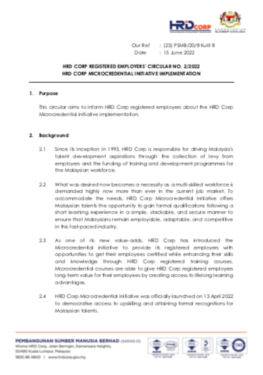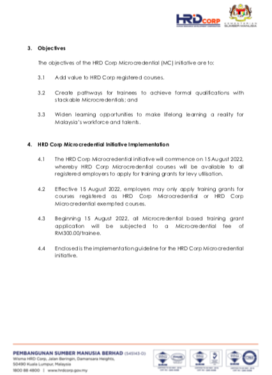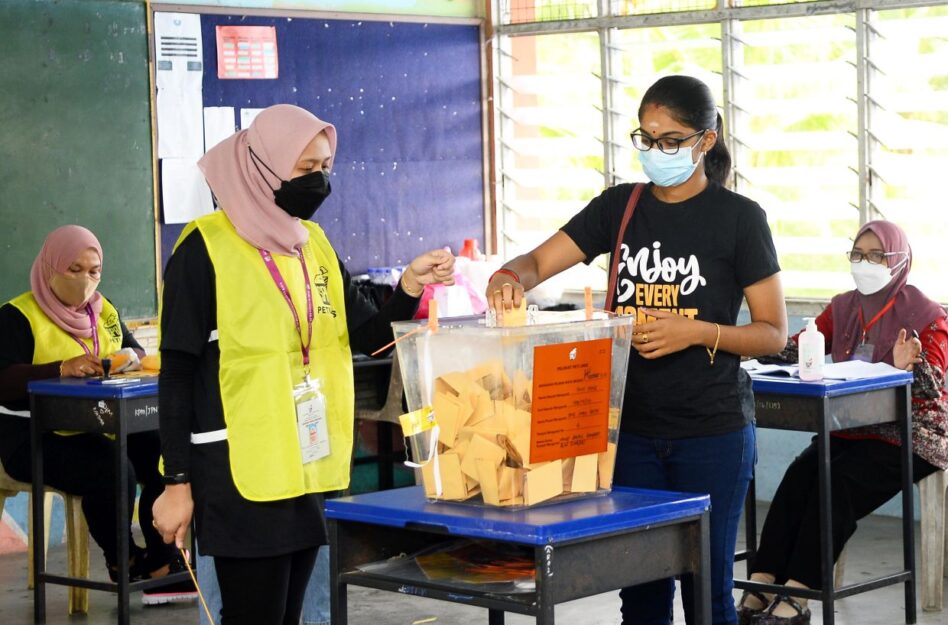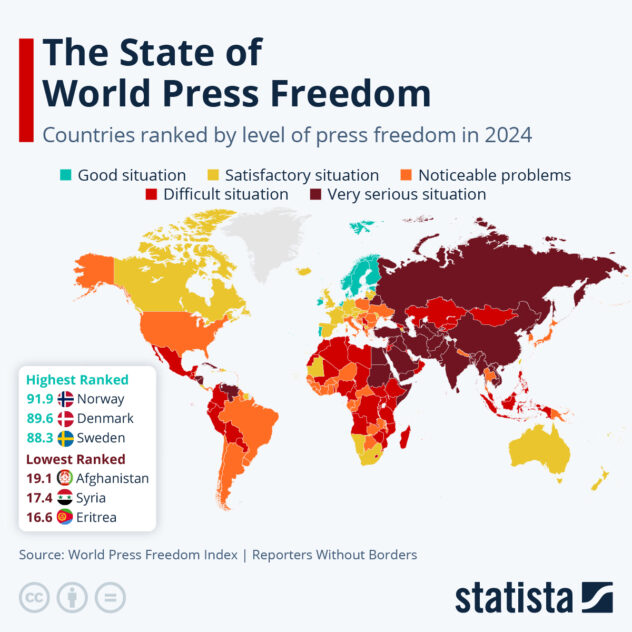THE Human Resources Ministry (MOHR) needs to urgently revisit the founding principles and objectives of the Human Resource Development Corporation (HRDC).
The HRDC was incepted in 1992, aimed at encouraging employers to provide learning and development opportunities for their employees.
This is to address productivity needs through the imposition and collection of a human resource development levy by establishment and administration of the fund.
It is imperative to note that levy payments made to HRDC are payments made to a consolidated fund, which the employers utilise for the benefit of their employees and employers will typically use the levy as their annual training budget.
However, the recent circular (2/2022) from HRDC dated June 15, 2022 stipulates that HRDC will charge employers a micro-credential fees of RM300 (per trainee, per training) for almost all training conducted.
This effectively means that the employer will be upskilling less people in their organisation for the same amount that they have been contributing to HRDC on an annual basis.
Why do I say that? For example, an employer with annual contribution of RM144k would be able to conduct 12 sessions for a two-day training (assume RM6k/day X 2 days = RM12k / session for 20 pax)
With this new ruling, it means the employer will now be only able to conduct eight sessions of the 2-day training (RM6k/day X 2 days + RM6k for micro-credential = RM18k / session)
This means, if previously an employer is able to upskill 240 people, they are now only able to upskill 160 pax, which is a 33% reduction in people being upskilled in an organisation!
Let’s take the annual contribution from all employers to HRDC to take a look at the impact to a broader nationwide perspective.
In 2019, the annual contribution is RM900 mil.
Using the same formula above, this means that the said amount will be able to fund around 75,000 sessions per year. With micro-credential cost factored in, this goes down to 50,000 sessions per year.
Assuming each session is filled with 20 pax, this means that we will have less than 500,000 employees being upskilled annually.
Are the board members aware?
As a human resources leader in multinational company, we are more focused on actual skills acquisition rather than certificates (caveat ; certificates in some technical area are valuable, but not all areas)
We are more concerned about how employees are able to deliver actual value into business through their capabilities and skills rather than bringing certificates into the business.
It may not be obvious now but I can imagine the kind of difficult conversation my fellow HR leaders will encounter with their respective managing director and country heads, trying to explain as to why they will now will be forced to upskill lesser people while paying the same amount to HRDC.
And why our training budget will need to be revised halfway through the fiscal period to execute activities planned earlier, which will now impact the sensitive topic of profit and loss.
This is no small matter which can be swept under the carpet as it is going to increase the cost of doing business.
This is the danger when a regulator unilaterally changes its focus to being a profit centre. The interest of the regulator can take precedence over its main contributing stakeholders’. The employers are compelled by law to contribute and now the employers have no say on how to train their employees.
Revenue streams are created by enforcing unilaterally new policies and regulations which favours the regulator at the expense of the stakeholders’ interest and potentially, Malaysia’s long-term competitiveness from people capability viewpoint.
With most businesses struggling with post COVID-19 effects such as increased costs due to the weak demand, global logistics backlog, raw material shortages, increased minimum wages and supply chain chaos, HRDC appear to be oblivious to the ramification of lower quantity of quality talents to businesses suffering from the above.
While the Malaysian Employers Federation (MEF), Federation of Malaysian Manufacturers (FMM), SME Association of Malaysia (SMEAM) and other representatives on the HRDC board may have been consulted, the depth of information provided to them may be inadequate.
Furthermore, HRDC needs to recognise the fact that the foreign direct investors have their own trade and business chambers namely the American Malaysian Chamber of Commerce (AMCHAM), Malaysian Italian Chamber of Commerce (MITCCI), Malaysian German Chamber of Commerce (MGCC), Japan Chamber of Commerce and Industry of Malaysia (JACTIM) and others.
Please engage and collaborate with all stakeholders including foreign chambers before making unilateral decision which will be akin to shooting our own foot.
The loss of 500,000 sessions up to a value of RM300 mil employer’s money meant for development of their own talents can create frustrations and loss of confidence on our talent competitiveness from our stakeholders.
Therefore, what we need is HRDC to engage and facilitate rather than frustrate the foreign and domestic stakeholders if we value and welcome them. – June 21, 2022
Roslan Sharif is a human resources leader and contributor to FocusM.
The views expressed are solely of the author and do not necessarily reflect those of Focus Malaysia.













